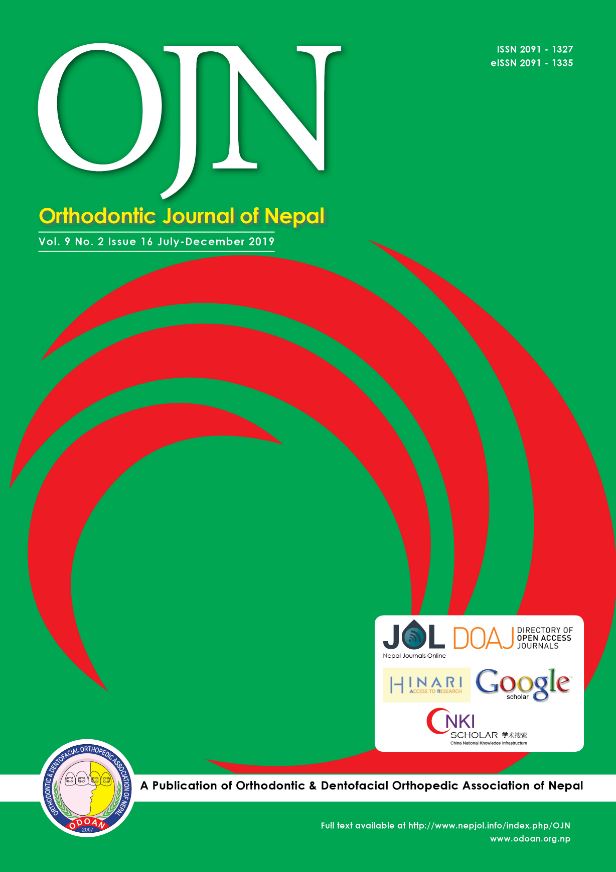Pattern of Impacted Mandibular Third Molar in Patients Presenting to Tertiary Care Hospital in Chitwan, Nepal
DOI:
https://doi.org/10.3126/ojn.v9i2.28412Keywords:
Classification, Orthodontic implications, Impacted mandibular third molarAbstract
Introduction: Impacted third molars are a major cause of visit to the oral surgeon and are associated with various complications like pain, inflammation of associated soft tissue and trismus leading to a need for their surgical removal. They are widely classified on the basis of angulation, depth and position as evident from orthopantomogram however they present in a diverse panorama of patterns each presenting different level of difficulty and different techniques for their removal. Our study describes different pattern of impacted lower third molars and perform brief literature review of dental and skeletal implications of impacted third molars.
Materials & Method: A retrospective study was designed in which 401 orthopantomogram were examined and the sex of patient, side of impaction and winters angulation based classification, depth and position classification as given by Pell and Gregory were recorded. Descriptive data analysis was performed with SPSS version 24 software.
Result: Out of total number of impactions 191(47.6%) were in females and 210(52.4%) were in males. Right sided impaction was seen in 199(49.6%) cases and 202(50.4%) were seen on left side. Mesioangular impaction was most common 203(50.6%) followed by distoangular 97(24.2%), horizontal 51(12.7%) and vertical 17(4.2%). Most common depth level of impaction was level I with 203(50.6%) followed by level II 178(44.4%) and level III 20(5%). Most common position was position B 355(88.5%) followed by position A 43(10.7%) and position C 3(0.7%). The most common pattern was IB (n=170) and IIB (n=166).
Conclusion: The most common impaction is mesioangular followed by distoangular and horizontal. Most of the impacted third molars are in moderately difficult position.
Downloads
Downloads
Published
How to Cite
Issue
Section
License
Copyright © held by Orthodontic & Dentofacial Orthopedic Association of Nepal
- Copyright on any research article is transferred in full to the Orthodontic & Dentofacial Orthopedic Association of Nepal upon publication in the journal. The copyright transfer includes the right to reproduce and distribute the article in any form of reproduction (printing, electronic media or any other form).
- Articles in the Orthodontic Journal of Nepal are Open Access articles published under the Creative Commons CC BY License (https://creativecommons.org/licenses/by/4.0/)
- This license permits use, distribution and reproduction in any medium, provided the original work is properly cited.




